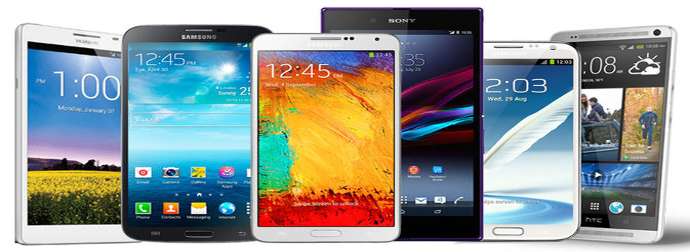- Home
- Blog
- Internet Sales Ecommerce Purchasing Habits: Do people really buy from smartphones and tablets?
Ecommerce Purchasing Habits: Do people really buy from smartphones and tablets?
-
 8 min. read
8 min. read
-
 Trevin Shirey
Trevin Shirey VP of Marketing
VP of Marketing
- Trevin serves as the VP of Marketing at WebFX. He has worked on over 450 marketing campaigns and has been building websites for over 25 years. His work has been featured by Search Engine Land, USA Today, Fast Company and Inc.
The explosive growth of mobile browsing over the last decade-plus has been remarkable. In 2000, only 53% of US adults owned a cell phone (and 0% connected to the Internet wirelessly).
As of 2012, 88% of US adults have cell phones and 44% of adults have smartphones. The growth doesn’t end with smartphones though.
Pew’s research revealed that 19% of US adults have tablets and 19% have e-readers. These numbers are only going to grow as a younger generation who has grown up with iPads and iPhones graduates college and moves into the real world. The age gap in mobile and tablet browsing will continue to close.
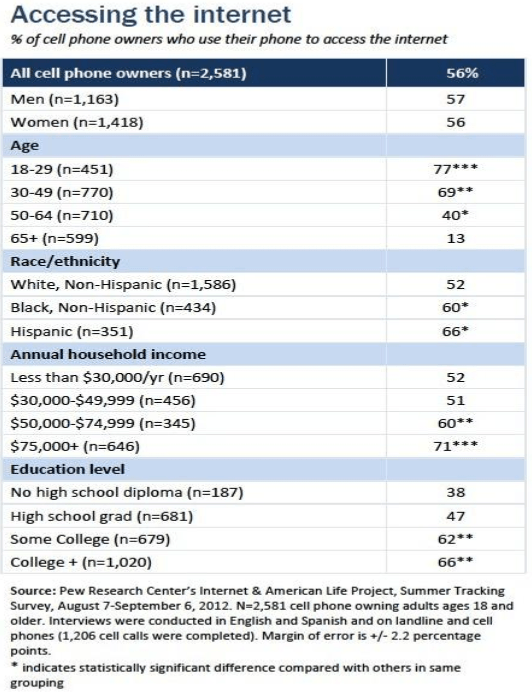
With the technology landscaping evolving so rapidly, purchasing habits of US adults have also changed.
Forrestor projected in 2011 that mobile commerce would grow from a 6 billion market in 2011 to a 31 billion market by 2016.
Just because the market is rapidly growing doesn’t mean it’s easy to convert mobile and tablet users though. When buying on mobile phones, people tend to gravitate towards sites that offer a high quality experience on mobile, not who they prefer on their PC. You aren’t necessarily competing with the other players in your industry, but with large brands like Wal-Mart and Amazon.
Offering a standout mobile experience is a must-have for any e-commerce store that has a target market who is active on mobile.
Do People Actually Buy Stuff On Phones & Tablets?
In a word — yes. It varies greatly depending on what industry you are looking at, but mobile conversion rates have been increasing for a few years now. The reasons for this are twofold.
One — more and more websites are now mobile friendly and it’s never been easier to purchase something via a smartphone. Two — more people are regularly browsing on handheld devices than ever. As a society, we’ve become more comfortable with smartphones and tablets so using them to purchase something online isn’t as foreign of a task as it once was.
 I wanted to find some hard numbers on how often people purchase stuff through mobile devices so I pulled in Google Analytics data from 58 large ecommerce stores that we work with. These websites serve a variety of industries and include sites with responsive design, mobile CSS and ones lacking any mobile presence. It’s a fairly large sample size and should be a pretty accurate look at mobile purchasing habits online.
I wanted to find some hard numbers on how often people purchase stuff through mobile devices so I pulled in Google Analytics data from 58 large ecommerce stores that we work with. These websites serve a variety of industries and include sites with responsive design, mobile CSS and ones lacking any mobile presence. It’s a fairly large sample size and should be a pretty accurate look at mobile purchasing habits online.
The sample of data I looked at for 2013 included 2.7 million visits from mobile devices and tablets.
The conversion rate for those was 1.0537%. While that number may appear paltry, it’s an increase from 2012. Conversion rates for those sites last year were 1.0131%. Conversion rates vary wildly depending on which device a visitor is using. Here are device specific conversion rates for 2012 and 2013 (sample size of ~55 million): 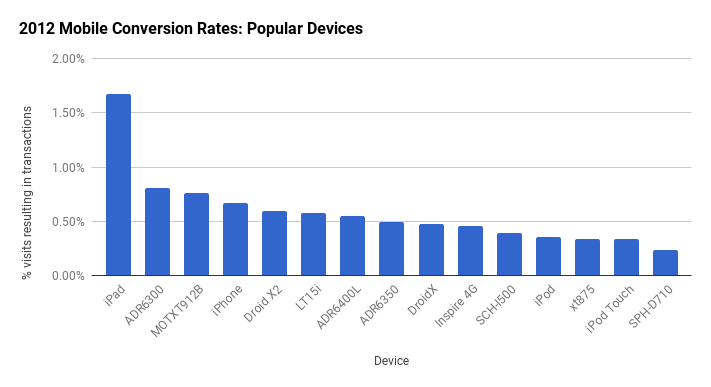
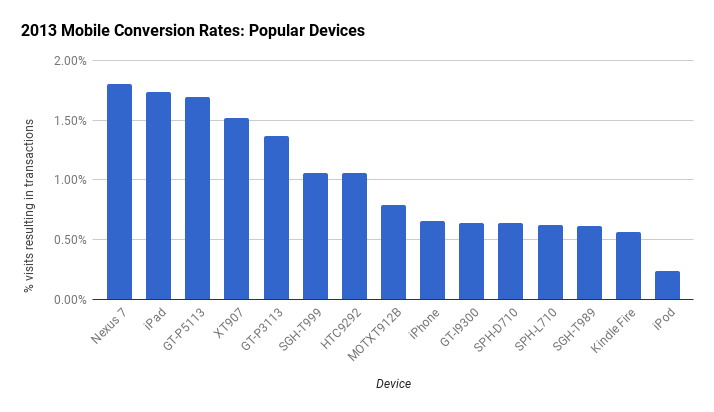
A few key observations here: – People are using a greater variety of mobile devices to shop online – Newer devices + better mobile site designs means an overall increase in conversion rates – Android devices are gaining market share – Conversion rates for mobile/tablets are obviously much lower than site averages
The Psychology Behind Mobile Shopping
 Before deciding how much to invest into mobile, think about your target market. Are people likely to buy your product when they are away from their desktop or laptop?
Before deciding how much to invest into mobile, think about your target market. Are people likely to buy your product when they are away from their desktop or laptop?
Do people purchase your product while traveling? Or do customers take their time and do a lot of research before purchasing?  For example, if you are selling tickets to a sporting event online, it’s vital that you have an awesome experience on mobile.
For example, if you are selling tickets to a sporting event online, it’s vital that you have an awesome experience on mobile.
Tickets are a type of product that people can purchase at a moment’s notice. On the other hand, if you are selling used cars online, a mobile friendly website is important for lead generation but few people are ever going to complete a transaction via their smartphone. Impulse buys and lower ticket items are more likely to be purchased on a smartphone or tablet.
If your company offers more expensive items that require heavy duty research before purchasing, you are likely better off heavily investing your money elsewhere. Another factor to keep in mind is the urgency that people have when they buy your product. Our example of tickets to a sporting event works for this.
In order to get the best seat or to get into a sellout, people feel a greater sense of urgency and are more likely to purchase using whatever device they have. Digging Into Analytics Psychology aside, we can look at some hard data in Google Analytics to see if your mobile shopping cart is performing up to par or if your website desperately needs one. Head to the Devices section in Analytics and take a look at the device specific ecommerce conversion rates: 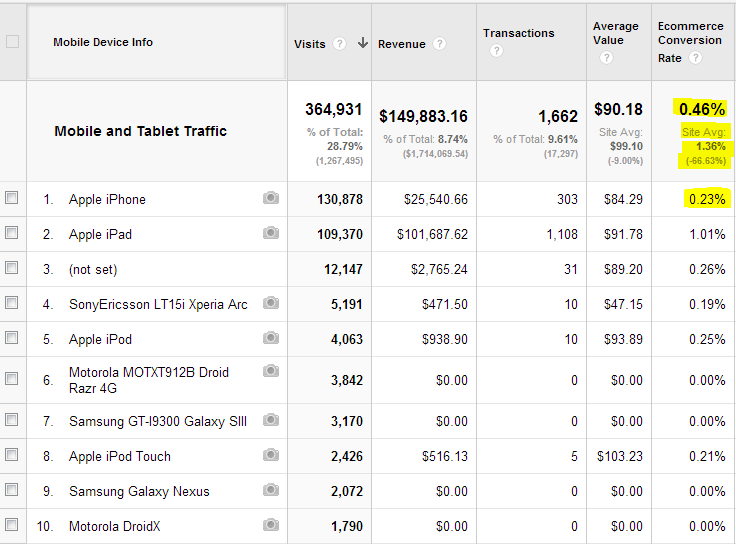 In this example, the site is generating tons of revenue from mobile and tablet traffic (nearly $150k per year!), but mobile and tablet traffic is converting at an abysmal rate – 0.46%.
In this example, the site is generating tons of revenue from mobile and tablet traffic (nearly $150k per year!), but mobile and tablet traffic is converting at an abysmal rate – 0.46%.
They don’t have responsive design or a mobile website and purchasing their products is an extremely grueling process. Doubling their conversion rate by optimizing their site for mobile and improving their mobile checkout process could easily double the conversion rate and bring in an extra $150,000 in revenue for them each year. Mobile optimization isn’t anywhere near that expensive.
In this case, it’s a no brainer. Here’s an example of a website that launched a new responsive redesign in July 2012. Mobile and tablet traffic used to convert around 0.5% of the time prior to the redesign launch. With responsive design, the conversion rate has doubled to around 1% each month. 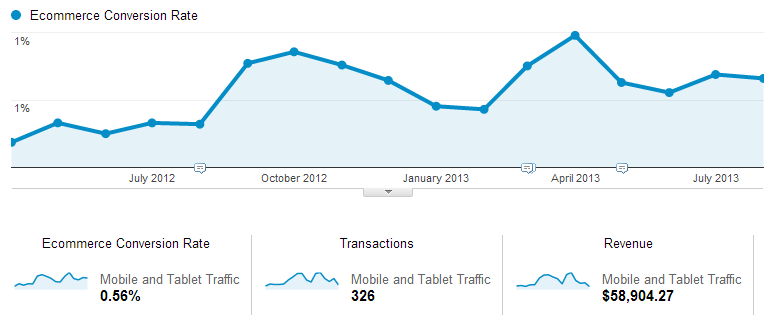 While exact conversion rate percentages vary by industry and a host of other factors, use the wealth of data available to you in Google Analytics to determine if it’s worth investing dollars into optimizing the mobile experience of your website.
While exact conversion rate percentages vary by industry and a host of other factors, use the wealth of data available to you in Google Analytics to determine if it’s worth investing dollars into optimizing the mobile experience of your website.
If your site is already making money from mobile despite a poor user experience on smartphones and tablets, you could be sitting on a cash cow.
Creating a memorable mobile experience
A quick peek at your competitors might reveal that few, if any, of them have amazing mobile websites. Don’t let that deter you from investing in mobile though. The mistake that most ecommerce retailers make is avoiding the thousand pound gorilla in the room that is Amazon, Walmart and other big box retailers.
These ecommerce giants keep creeping further up the results with each algorithm update from Google. Not only that, but their large budgets have allowed them to be the earliest movers in mobile. Few people would have trouble logging on to Amazon on their iPhone and easily ordering a product.
Amazon’s experience on mobile offers the same things as their desktop one: trust, familiarity and ease of use. While your direct competition might be sleeping on mobile, the big box retailers in your industry definitely aren’t. Chances are you can’t replicate the exact mobile experience Amazon offers, but that should be your standard…not half-baked efforts from your other competitors. Let’s take a peek at Amazon’s website as seen on the iPhone:
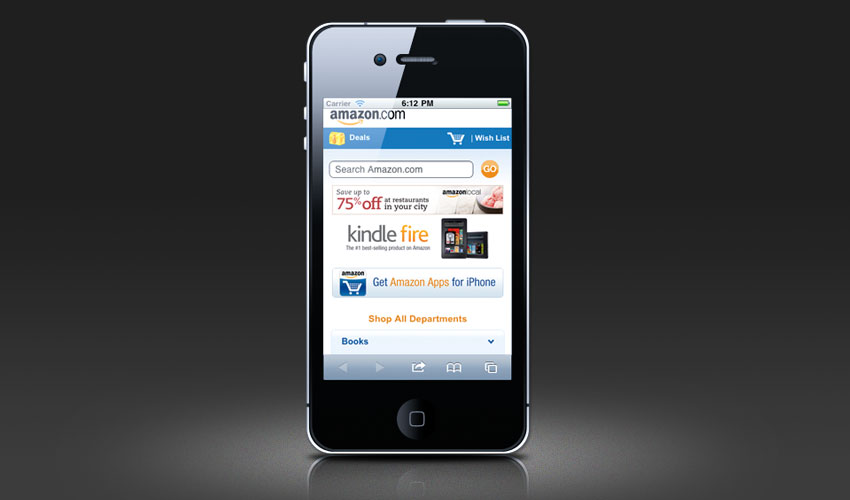
It’s simple and offers the same familiar experience you get when you browse Amazon.com on your desktop or laptop.
Follow their lead and aim to make your mobile experience as captivating as your desktop one. Do people keep buying from your ecommerce store because you are the easiest to use? Carry that over to smartphones and tablets.
Do customers rave about your customization options? Invest some money and deliver that same experience on mobile. Consumers are willing to spend money from their smartphones and tablets.
If you run an ecommerce store and you aren’t making any money from mobile visits, then you’re missing out on a big chunk of change that’s only going to grow bigger in the future. Photos by Pedro Oliveira , Ed Yourdon
-
 Trevin serves as the VP of Marketing at WebFX. He has worked on over 450 marketing campaigns and has been building websites for over 25 years. His work has been featured by Search Engine Land, USA Today, Fast Company and Inc.
Trevin serves as the VP of Marketing at WebFX. He has worked on over 450 marketing campaigns and has been building websites for over 25 years. His work has been featured by Search Engine Land, USA Today, Fast Company and Inc. -

WebFX is a full-service marketing agency with 1,100+ client reviews and a 4.9-star rating on Clutch! Find out how our expert team and revenue-accelerating tech can drive results for you! Learn more
Try our free Marketing Calculator
Craft a tailored online marketing strategy! Utilize our free Internet marketing calculator for a custom plan based on your location, reach, timeframe, and budget.
Plan Your Marketing Budget

Looking for More?
Get expert ideas, industry updates, case studies, and more straight to your inbox to help you level up and get ahead.
"*" indicates required fields
Try our free Marketing Calculator
Craft a tailored online marketing strategy! Utilize our free Internet marketing calculator for a custom plan based on your location, reach, timeframe, and budget.
Plan Your Marketing Budget

